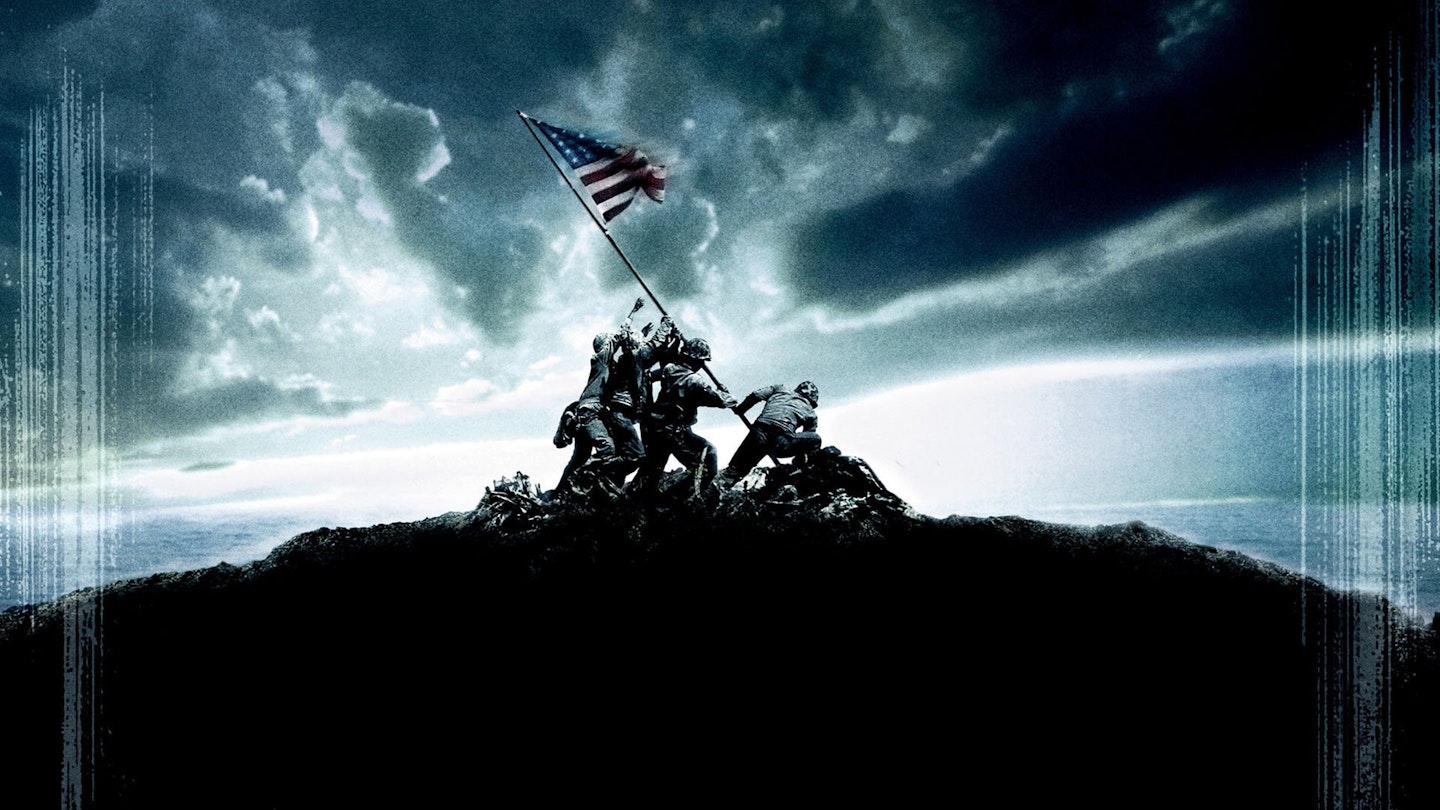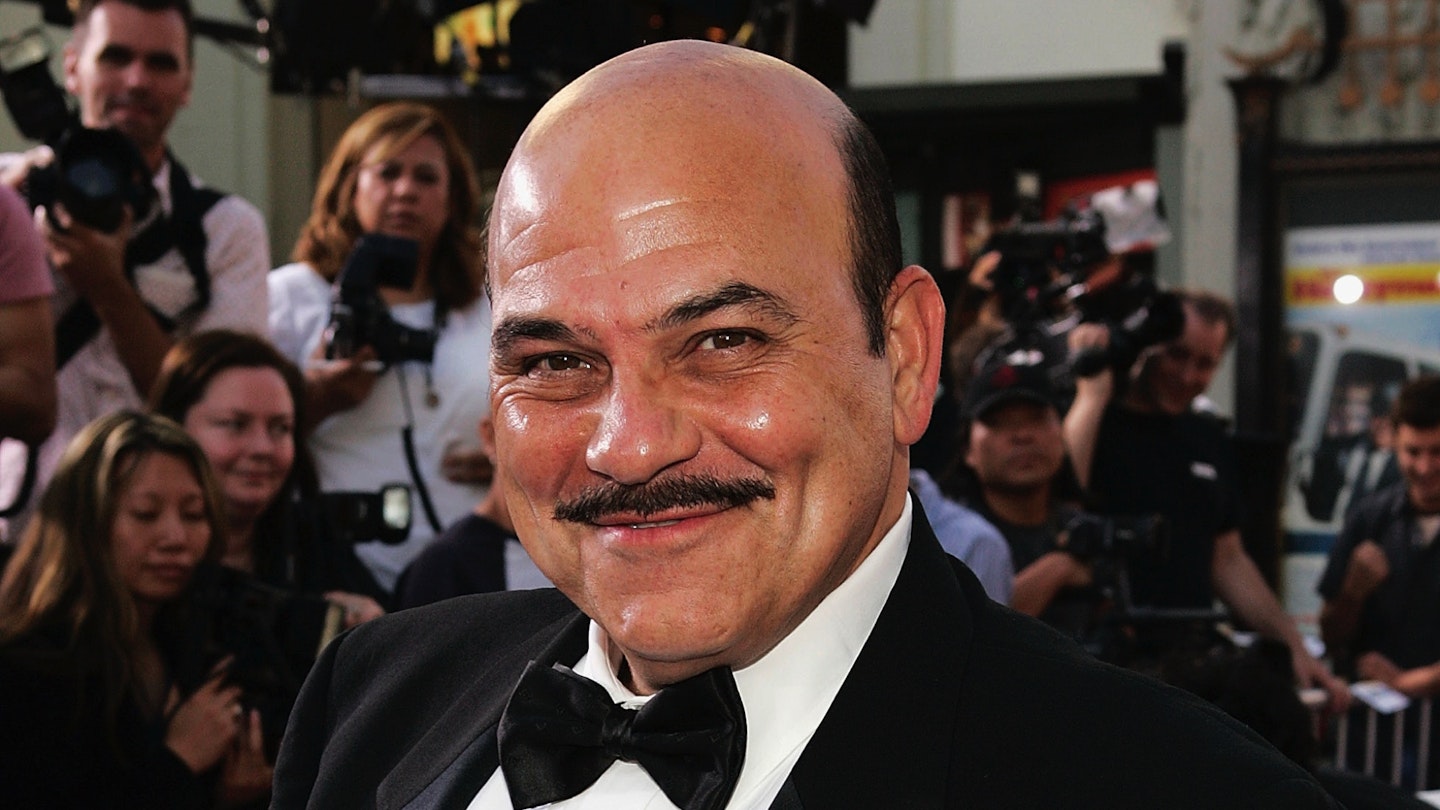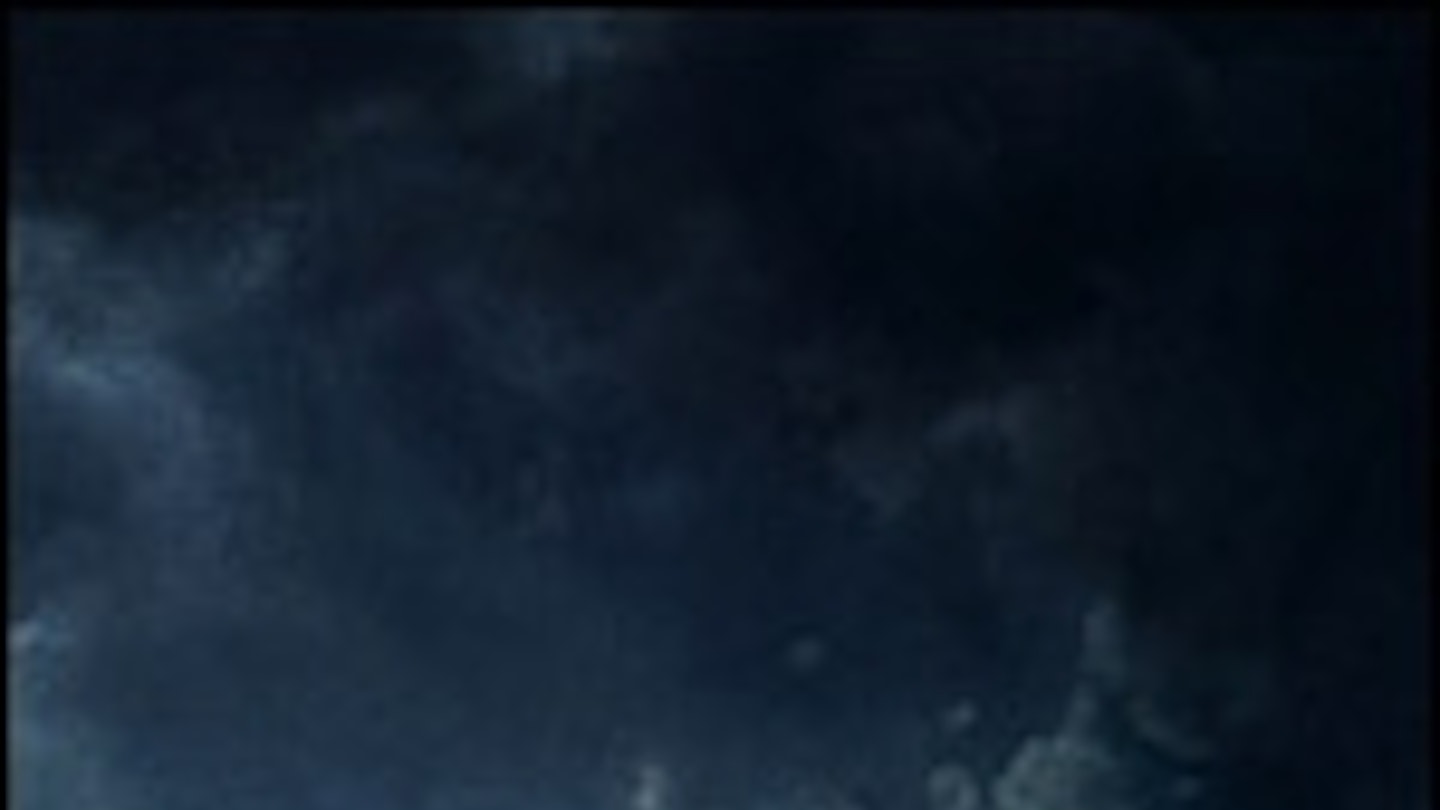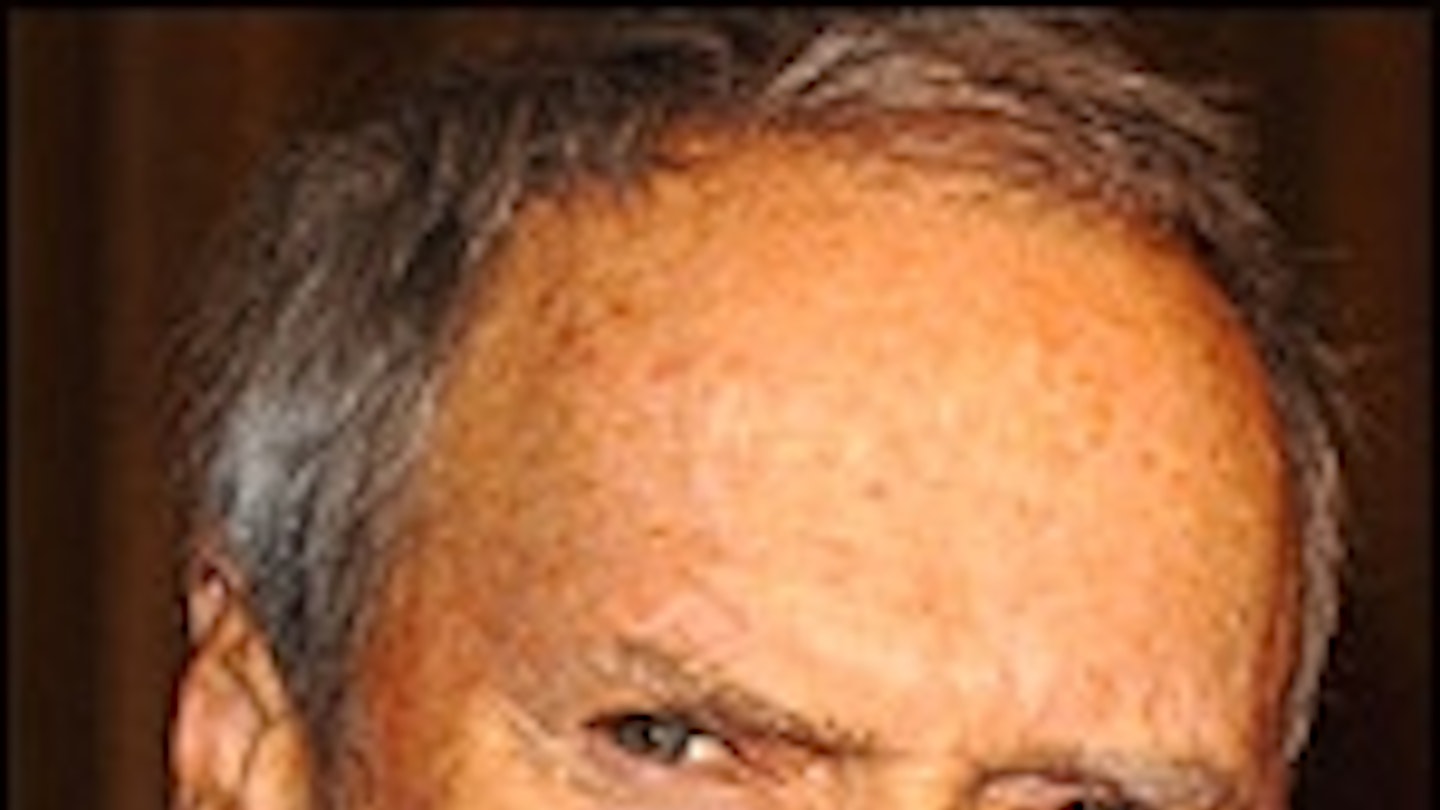Let’s start with an understatement — Clint Eastwood is very good at what he does. You know, laying into American myth. Deconstructing purple sentiment. Running a dirty great tractor over hallowed cinematic ground and somehow making it an act holy and proper enough to win multiple Oscars. Minus a few missteps, he has produced the most formidable output of any American artist of the last 25 years (sorry, Marty; it’s true): Unforgiven, Mystic River, Million Dollar Baby and now the stately and powerful parable, Flags Of Our Fathers.
That, at 76, he has taken on such a massive production, teeming with meticulous, photo-real CGI and a youthful cast of hundreds, will only add weight to his ever-growing legend. That he has concurrently filmed a companion piece, a view of the conflict entirely from the Japanese perspective, threatens to transform him into an icon of John Fordian stature. The irony of which is that the guiding light of Eastwood’s filmmaking is a determination to unearth the flinty reality beneath Hollywood’s golden apparitions — to print the truth, not the legend.
You can see why he became enamoured with James Bradley’s lengthy biography — at its heart it is all about how images can be capricious things, allowing frozen moments to become calcified as myth. It is the story of the six men — including the author’s father, John “Doc” Bradley — who raised the Stars And Stripes over the ashen slopes of Iwo Jima, an island, barely more than a volcanic crag of rock and moss, that lies off the shore of Japan and became the key strategic target in finally bringing the War in the Pacific to an end. What gives this event such status is the chance photo taken of those five Marines and one Navy corpsman. The Raising Of The Flag Over Iwo Jima by Joe Rosenthal is arguably the most famous photograph of all time, certainly the most celebrated piece of photojournalism. And what must have spiked the director’s interest is that the truth behind that split-second honorific is a story of exaggeration, lies, manipulation and, finally, the true nature of courage that won the damn War.
The facts of the matter are less than legend. They were the second team to raise a flag, after a glory-grabbing general had demanded the first as a personal trophy. One of the dead heroes is identified wrongly, and his bereft parents left to wonder. The flag was raised on the fifth day of battle — it took them another 35 days to conquer the island in a fractious and terrifying land battle. Timid troopers disappear into the earth; a cave-full of Japanese soldiers sacrifice themselves with a grenade, their bodies snapped and split like dry pastry: images that direct us toward the forthcoming Letters From Iwo Jima (out in 2007), where we will see the Americans as the enemy and these unknowable Japanese as humans.
If Unforgiven dismantled the easy violence of the Western, and to some extent Mystic River did the same with the legacy of Dirty Harry, then Flags exposes the circumscribed morality put forth by war movies like, say, Where Eagles Dare. Or, for that matter, John Wayne’s glossy joke of an epic, Sands Of Iwo Jima, made in a 1949 still caught in the drowsy afterglow of victory.
The film’s structure, eked out of the book’s myriad recollections by William Broyles Jr. and latterly Eastwood’s go-to guy Paul Haggis, jaggedly cuts back and forth between three time-zones: a contemporary America in which elderly veterans prise memories out of the past; the weird, almost vaudevillian promotional tour the three surviving flag-raisers are forced to undertake back home in 1945 to raise war bonds; and the island itself, where soldiers toil up the beach through a maelstrom of flying metal and explosions that burst out of the cold, grey light with vivid plumes of orange fire.
That the violent throes of the beach landing run the risk of being slammed as a Xerox of producer Steven Spielberg’s Saving Private Ryan — the bleached-out colours, the whirling edits and whiplash pans throwing us across bloody mayhem — is inevitable. Ryan set a modern standard for the revisionist depiction of war; to veer away from it would send cinema backwards. There are, though, distinct differences. Omaha Beach was a violent spasm where the sundering of anonymous life became a dread vision: a production line of death. Here we have already been introduced to our brothers-in-arms. The violence, a riveting dance of extraordinary cockpit shots from diving fighters, cropped foxhole POVs and the hefty shudder of cannon fire, has a more dramatic function. It is less about unveiling the mental and physical battery of warfare than of contrasting such horrors with the smarmy showbiz of the bond tour, which, in itself, was a necessity — the American war effort was going broke.
The three survivors — played with dutiful if unmemorable seriousness by Ryan Phillippe, Adam Beach and Jesse Bradford — find themselves unable to process their sudden glorification. Beach’s half-Indian Ira Hayes hits the bottle, desperate to return to his comrades. Bradford’s Rene Gagnon soaks up the adulation even though he never fired his weapon — in every sense he embodies the emptiness of the gesture — while Phillippe’s “Doc” Bradley is a straight-up guy who understands the value of promotion, but becomes appalled at the perverse appropriations of what is, to them, a meaningless image. Ice-cream sculptures of the photo are set before them, sticky with strawberry sauce; a re-enactment is concocted on a mocked-up hilltop in a stadium lit by fireworks that Eastwood deceives us into thinking the real thing.
This is not a deconstruction of war, as such, but of the image of war as propaganda, and you can feel the resonances with today’s world of spin and duplicity. But the film is also weighed down by its themes. So emphatically does it bang home its message — the reality of war is in staying alive and saving the lives of those around you, but the idealistic deception is what becomes history — the characters struggle to be heard. Eastwood finds it hard to centre the drama, especially without the crags and bluffs of his own weathered features on screen. And the triple-tiered structure becomes over-complicated, often leaving you at a loss as to where or when you are.
But the intelligence is never in doubt — there is even a waspish air of disdain, running through the film, for modern Hollywood’s strain of gaseous celebrity and their manipulation for profit. Eastwood has long since risen above the throng to do whatever he desires. What makes him so valid, still, is that rather than put his feet up and gaze knowingly toward a sinking sun, he goes on fighting the good fight against mediocrity and cliché. He is fighting for art. He’s also winning.



